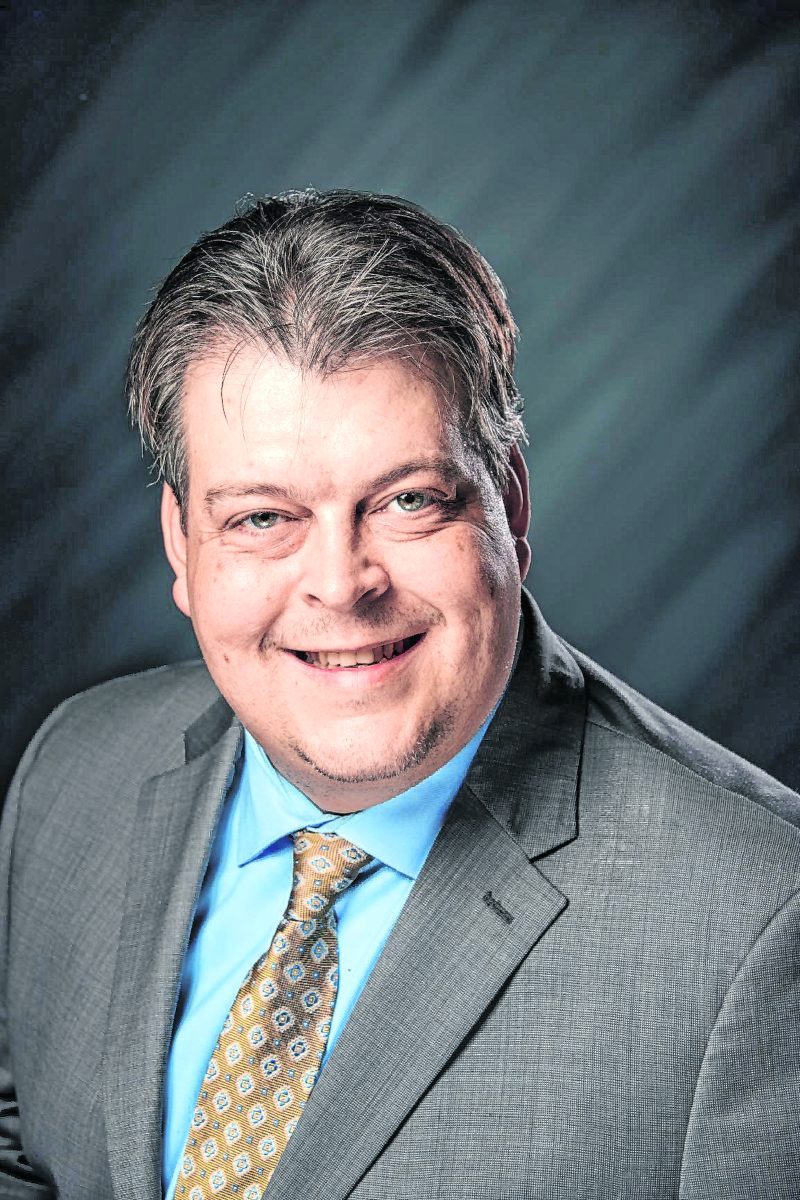State lawmakers have wrapped up most of their work this year at the Statehouse, marking the near-end of an unusual legislative session.
The Indiana General Assembly finished up most of its business for the 2021 legislative session April 22, including passing the state’s $37.4 billion two-year budget.
But it’s not quite over yet. Normally, the House and Senate would adjourn for the year in the spring, but since population data from the 2020 Census has been delayed due to the coronavirus pandemic, lawmakers will return this fall to vote on the new political district maps for seats in the Indiana Statehouse and U.S. House of Representatives.
More than 1,000 bills were filed this year in both chambers, and 220 made it to Gov. Eric Holcomb’s desk. Holcomb vetoed two of those bills, and signed all but one into law as of Monday.
Local lawmakers representing all or part of Johnson County said this session was unlike any other since it took place during the pandemic. New seating arrangements were made to accommodate social distancing, committee hearings were given time limits and the House didn’t meet in its chamber the entire session.

Despite that, the session was productive, said Sen. Greg Walker, R-Columbus.
“Given the circumstances, I feel good about what we passed and what we killed,” Walker said.
Budget, COVID-19-related bills made it through
The top priority, and requirement, of the General Assembly was the passage of the state’s $37.4 billion budget.
Lawmakers overwhelmingly passed the budget, with just five voting against it in the two chambers. The budget is widely viewed as a success, particularly for K-12 education, which will receive a 9% increase in funding.
A historical $1.9 billion new dollars went toward K-12 schools, more than twice as much as originally proposed in earlier budget drafts. The money will fund increases in tuition support for the state’s public schools, and an expansion of private school choice programs.

“We were sitting on an incredible surplus of cash,” said Rep. John Young, R-Franklin.
Lawmakers also added checks with the hopes of encouraging all school districts to raise the minimum teacher salary to at least $40,000. There is no mandate to increase salaries, but school districts would have to report to the state on why they are paying less than $40,000.
There is also a requirement that 45% of the tuition support money go to teacher salaries, and a school system cannot reset a salary that is lower than the previous one offered.
“It starts the idea that we’d like to get teachers to that base. But again, we don’t set salaries. That’s what the elected school board does, so we want to be careful not to weigh too much into that,” said President Pro Tem Rodric Bray, R-Martinsville.

Lawmakers also used $3 billion in one-time federal money from COVID-19 relief packages to pay down debt and invest in infrastructure, Bray said.
Another priority that passed was Senate Enrolled Act 1, which protects businesses and health care organizations from COVID-19-related lawsuits. It was one of many bills that passed to address issues that arose from the pandemic.
Senate Enrolled Act 202 requires health care operations, such as nursing homes, assisted living facilities and hospitals, to allow visitation by family caregivers during states of emergency.
Senate Bill 5 was amended to prohibit local health officials from implementing more stringent restrictions than the state during an emergency order, unless those restrictions are approved by either the local city council or county legislative body.
Locally, Johnson County health department officials were opposed to the legislation. Dr. Craig Moorman, county health officer, has said the law dangerously mixes politics with a professional agency, adding that the Johnson County Board of Commissioners are “not well-versed” in public health.
The bill had wide support of Republicans in the Statehouse. Walker said it simply adds more accountability.
“I supported that bill because it would make sure that in case of an emergency, there is an elected official that can be held accountable,” he said. “I don’t have any concern for what our local health departments have done.”
SB 5 was still on Holcomb’s desk awaiting action Monday.
Governor’s emergency powers up for debate
A hot topic during the session was addressing the governor’s emergency powers. Several bills were drafted that would have changed what powers Indiana’s governor has during a state of emergency, and House Bill 1123 was one that made it out of both chambers.
It allows the General Assembly to call themselves back for a special session if Holcomb declares an emergency. Plus, the bill requires lawmakers to decide how federal stimulus money is spent if lawmakers are in session.
Holcomb made it clear early on in the session that he thought the bill was unconstitutional, and he vetoed it last month. The House and Senate then voted to override the veto to make the bill law anyway. Holcomb is now suing the General Assembly over the constitutionality of the law.
Bray, who is the leader of the Senate, said he and House Speaker Todd Huston, R-Fishers, have been cordial with Holcomb throughout the entire process, and they just have a disagreement with what the Indiana Constitution says.
The state constitution says only the governor can call back the General Assembly for a special session, but it also says the General Assembly can call themselves back if they make a law to do so.
“This emergency powers bill is not really done in order to make changes or because we think the governor handled anything badly. He did a nice job in a really, really difficult situation,” Bray said. “There’s just a difference in opinion on whether it’s constitutional or not. We think very confidently that it is.”
What didn’t pass and why
A House bill that would have nixed permits to carry a handgun in Indiana died early on. The bill seemed to have momentum until it got to the Senate; it passed through the House quickly.
In addition to permit-less carry, the bill would have also required Indiana State Police and the Bureau of Motor Vehicles to create a database and a process for local law enforcement to easily check if someone could own a handgun. Because of this requirement and the less-than-a-year time frame to create the database, state police officials opposed the bill.
That is why it was not heard in the Senate, Bray said. Making a database like that is difficult because the data on every person’s criminal and mental health history may not be accurate as it is now, he said.
“Creating that list at this point is actually not possible because the data you get from that, there’s a lot of issues with it,” Bray said. “That really complicated that, and at the end of the day, it didn’t make it through.”
The Senate did pass a resolution making the lifetime carry permit free along with the five-year carry permit, which was already free.
House Bill 1369, another controversial bill, also died in the Senate. It would have created some consistent standards for locating wind and solar projects in the state. Local officials, including in Johnson County, opposed the bill as it took power away from local governments wanting to enact their own standards. The bill was amended to give more local control, but it still died in the Senate.
Walker was a strong opponent of the bill. He said he wants to make sure the issue of taking away local control in that instance stays dead. Typically, even when bills do not make it through one session, they come back the next year.
“I will make sure it stays dead, if I can do anything about it,” Walker said. “I’m not opposed to solar wind regulations, but it should be locally controlled.”
Lawmakers to return in the fall
Every 10 years when the Census releases new population data, the district lines for Indiana’s Statehouse and Congressional districts are redrawn by the majority party in the General Assembly.
Usually, the maps would be drawn and voted on during regular session. But due to delays relating to the COVID-19 pandemic, redistricting data isn’t expected to be released by the Census Bureau until August, at the earliest.
Now, all 150 state lawmakers will return to the Statehouse in the fall to vote on new district maps.
Drawing the maps is typically done behind closed doors by the majority party, which is the Republican party. That will take place once the data needed is available, and there will be public hearings during that time for constituents to offer input, too.
Concerns about gerrymandering, which is drawing district lines to favor one party, and transparency have been voiced over the years. Walker said the process of redrawing the district lines is more difficult than it seems.
He does not think Indiana is gerrymandered in favor of Republicans. In a study done by FiveThirtyEight in 2018, analysts tried drawing Indiana’s Congressional map several ways, including one that would favor Democrats, one that favored “competitive districts” and one that was drawn evenly along county borders. All seven ways the maps were drawn, the outcome still resulted in two likely-Democrat held districts, and the rest were Republican-leaning which is what Indiana has now.
Everything from population density, demographics and economics are taken into account when drawing districts. There is no “perfect district” that is drawn completely fair to everyone, Walker said.
“No matter what you do, you don’t want a perfect district because you may have messed up a bunch of others. It’s not just sitting down and saying, “How can I make sure Republicans keep winning through 2030?’” Walker said. “You could literally draw the map a million ways.”




